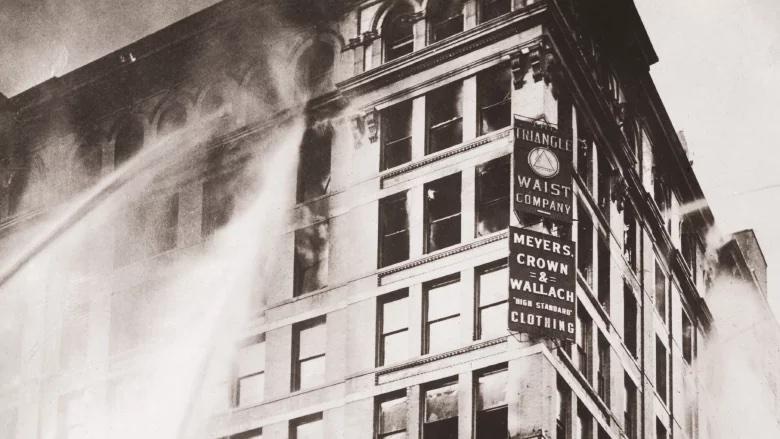Roots of the garment industry
Matthew the apprentice German tailor arrived into a chaotically growing New York garment industry. The American Civil War, which had boosted the industry with the manufacturing of uniforms, had just ended. The demand for ready-to-wear clothing was surging.
Sewing machines had radically changed the systems of clothing manufacture. If Matthew thought he would make his living as a custom tailor, working in a shop for monied clients, he instead found himself in a cutthroat world of piecework, cheap labor, and unsafe work conditions in the loft factories cropping up all around Lower Fifth Avenue.
The industry grew up first near to the elegant shops and department stores, and Matthew must have worked in those early tailoring lofts. By 1882, however, the family was already living a few avenues to the west, on West 27th Street between Seventh and Eighth Avenues. This was in the heart of what was then called the Tenderloin, the red light district adjoining the theaters on Broadway. It was an area rife with saloons, brothels and gambling joints.
In 1911, the Triangle Shirtwaist Fire put a focus on unsafe working conditions in the garment lofts and led to various reforms and worker protections. German-American politician Robert F. Wagner led the state commission investigating the fire. Its findings led to sweeping new regulating labor in New York State. Later, Wagner would serve 22 years in the U.S. Senate and his son was a two-time Mayor of New York.
Another result of the fire was that New York City passed the first-ever commercial zoning law to push the garment industry away from Fifth Avenue and into a new district that was essentially the Tenderloin. Very soon, factory lofts began replacing nightclubs and clip joints in the blocks from 23rd St. to 42nd St. Law enforcement and social reformers had failed to clean up the Tenderloin, but the garment industry did finally drove out the vice.

